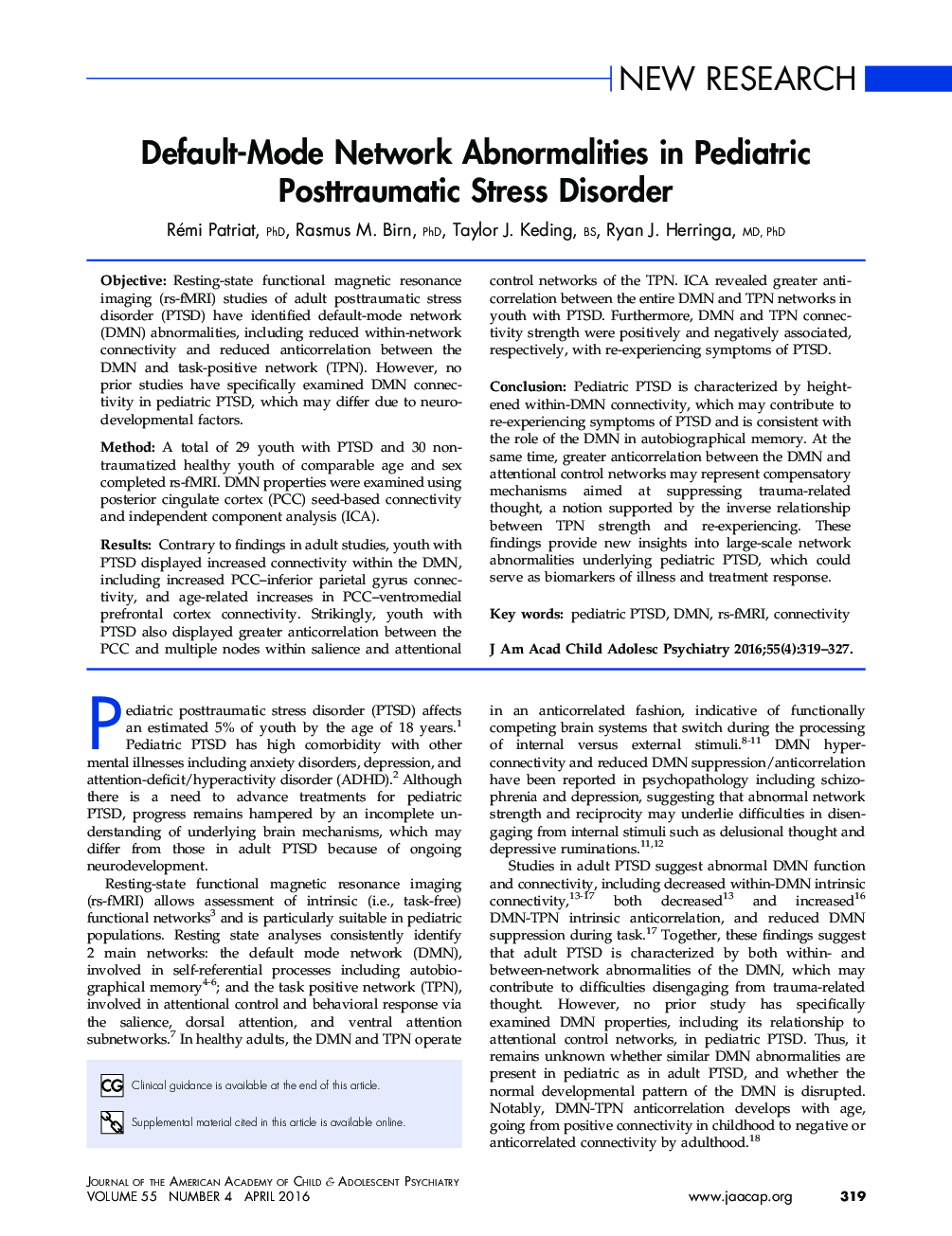| Article ID | Journal | Published Year | Pages | File Type |
|---|---|---|---|---|
| 324480 | Journal of the American Academy of Child & Adolescent Psychiatry | 2016 | 9 Pages |
ObjectiveResting-state functional magnetic resonance imaging (rs-fMRI) studies of adult posttraumatic stress disorder (PTSD) have identified default-mode network (DMN) abnormalities, including reduced within-network connectivity and reduced anticorrelation between the DMN and task-positive network (TPN). However, no prior studies have specifically examined DMN connectivity in pediatric PTSD, which may differ due to neurodevelopmental factors.MethodA total of 29 youth with PTSD and 30 nontraumatized healthy youth of comparable age and sex completed rs-fMRI. DMN properties were examined using posterior cingulate cortex (PCC) seed-based connectivity and independent component analysis (ICA).ResultsContrary to findings in adult studies, youth with PTSD displayed increased connectivity within the DMN, including increased PCC–inferior parietal gyrus connectivity, and age-related increases in PCC–ventromedial prefrontal cortex connectivity. Strikingly, youth with PTSD also displayed greater anticorrelation between the PCC and multiple nodes within salience and attentional control networks of the TPN. ICA revealed greater anticorrelation between the entire DMN and TPN networks in youth with PTSD. Furthermore, DMN and TPN connectivity strength were positively and negatively associated, respectively, with re-experiencing symptoms of PTSD.ConclusionPediatric PTSD is characterized by heightened within-DMN connectivity, which may contribute to re-experiencing symptoms of PTSD and is consistent with the role of the DMN in autobiographical memory. At the same time, greater anticorrelation between the DMN and attentional control networks may represent compensatory mechanisms aimed at suppressing trauma-related thought, a notion supported by the inverse relationship between TPN strength and re-experiencing. These findings provide new insights into large-scale network abnormalities underlying pediatric PTSD, which could serve as biomarkers of illness and treatment response.
